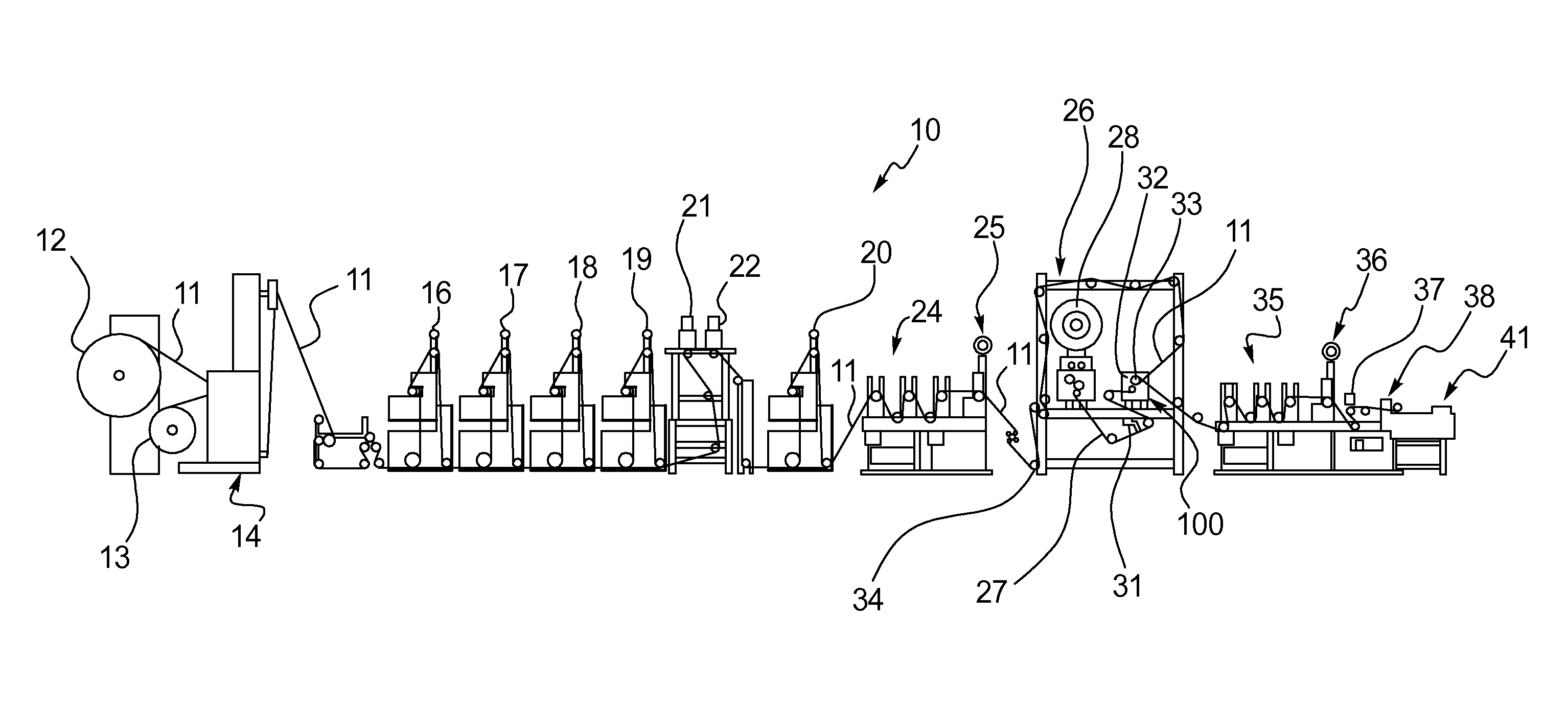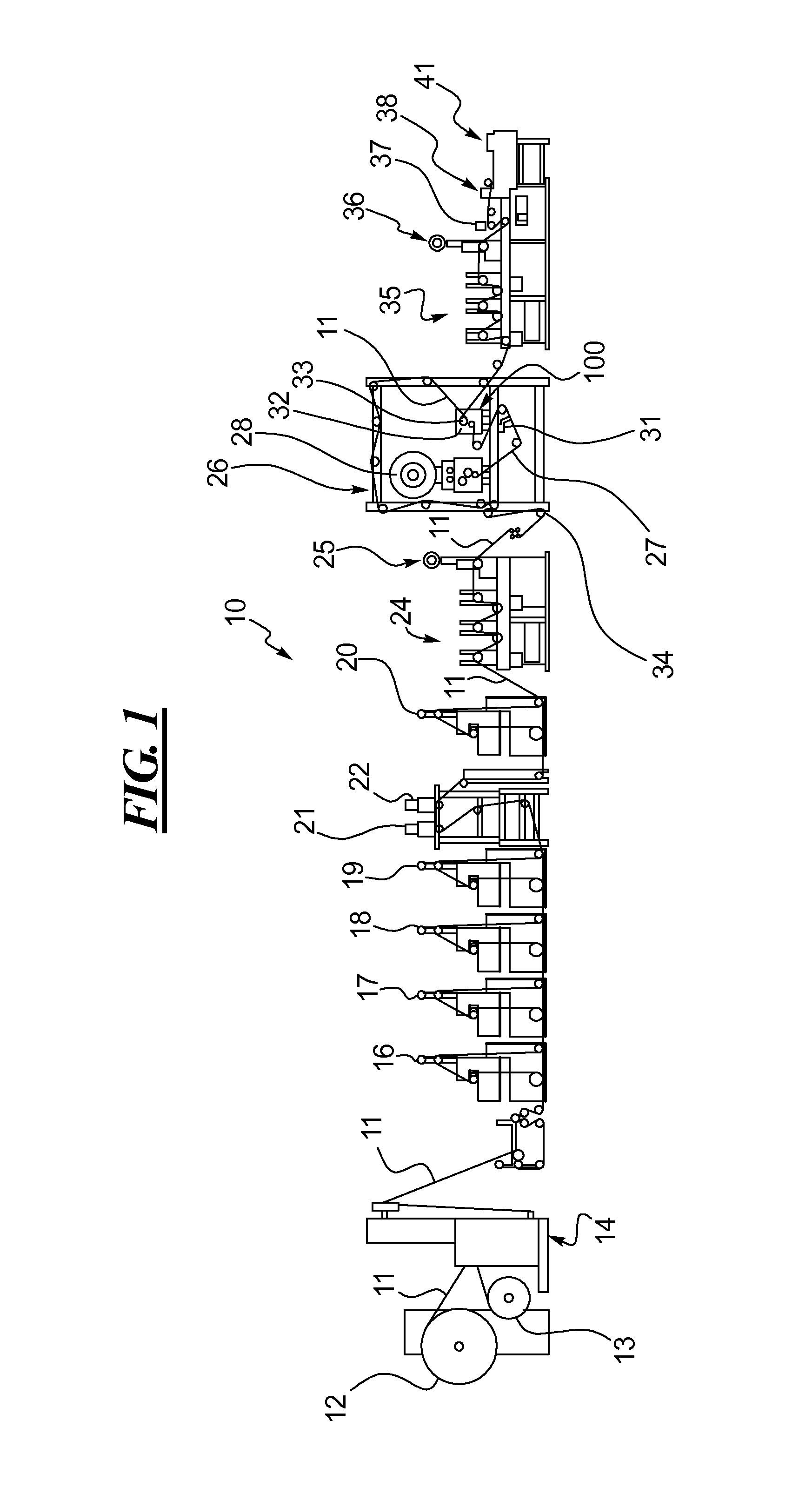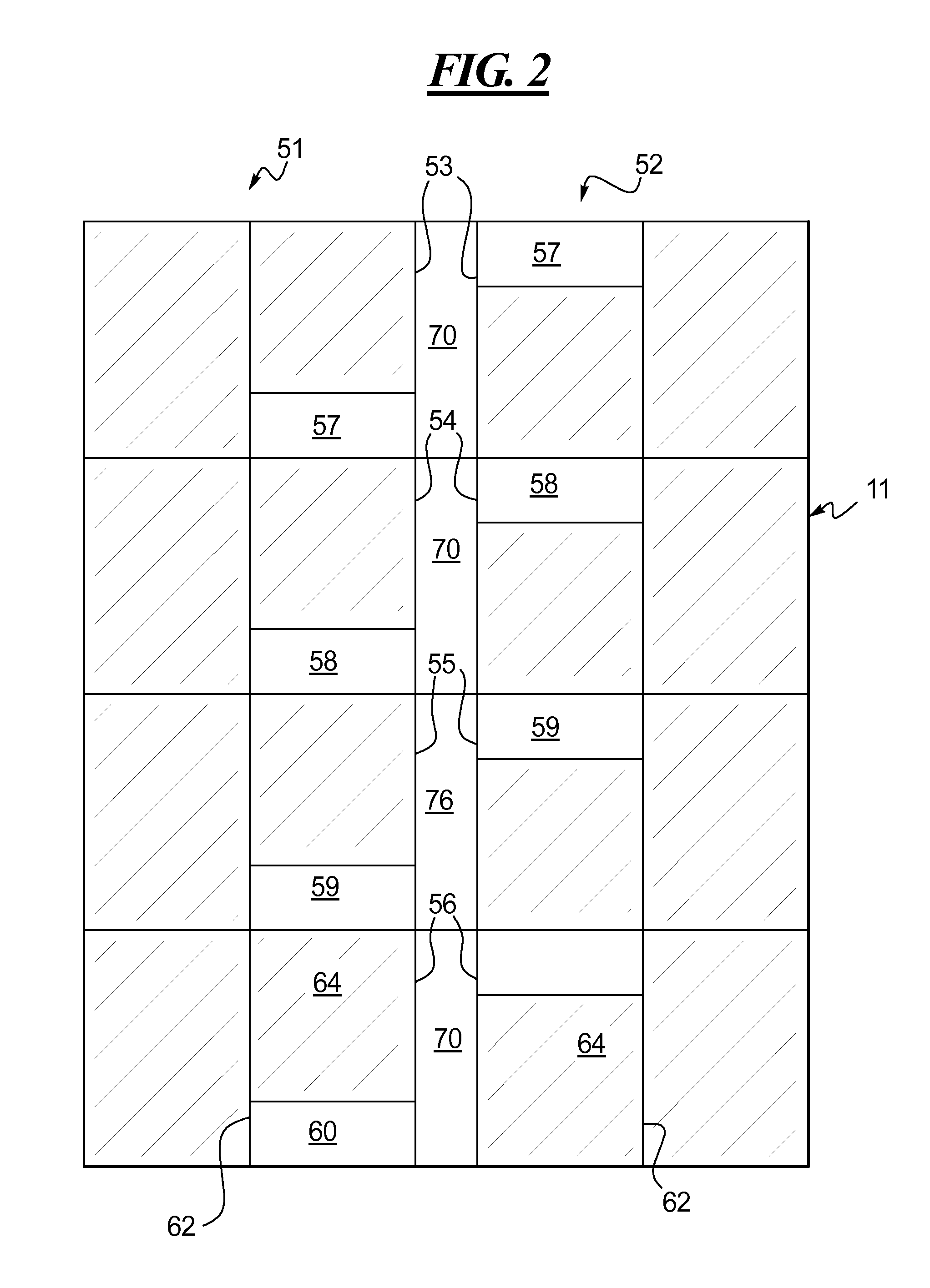Multi-Part Form Made Using Single Pass/Single Web Manufacturing Process
a manufacturing process and multi-part technology, applied in the field of multi-part or multi-page forms, can solve problems such as reducing the possibility of sequencing errors, and achieve the effect of excellent registration of each par
- Summary
- Abstract
- Description
- Claims
- Application Information
AI Technical Summary
Benefits of technology
Problems solved by technology
Method used
Image
Examples
example a
[0044]To manufacture the four-part form 51 illustrated in FIGS. 2-8, in which the top part 53 is an instruction sheet, the second 54 is a part on which someone writes information using a pen, and that information is expected to transfer to bottom parts 55 and 56, a roll CB paper may be used for the web 11. CF coating is selectively applied to parts 55 and 56, but not in the areas 59, 60 reserved for the barcode or other variable data. The four-part form 51 can be manufactured in one pass though the system 10, including adhesive binding in the stub areas 70 and adhesive coated liner application on the bottom of part 56.
[0045]Suitable substrates include CB coated carbonless paper for all four parts of the form 51. Silicone liner 27 and hot melt adhesive may be used for the label section on the bottom of part 56. The method may be carried in the following order: The roll of paper is unwound from a butt splicer 14 and webbed through flexographic print-heads 16-19. Static (non-variable) ...
PUM
 Login to View More
Login to View More Abstract
Description
Claims
Application Information
 Login to View More
Login to View More - R&D
- Intellectual Property
- Life Sciences
- Materials
- Tech Scout
- Unparalleled Data Quality
- Higher Quality Content
- 60% Fewer Hallucinations
Browse by: Latest US Patents, China's latest patents, Technical Efficacy Thesaurus, Application Domain, Technology Topic, Popular Technical Reports.
© 2025 PatSnap. All rights reserved.Legal|Privacy policy|Modern Slavery Act Transparency Statement|Sitemap|About US| Contact US: help@patsnap.com



